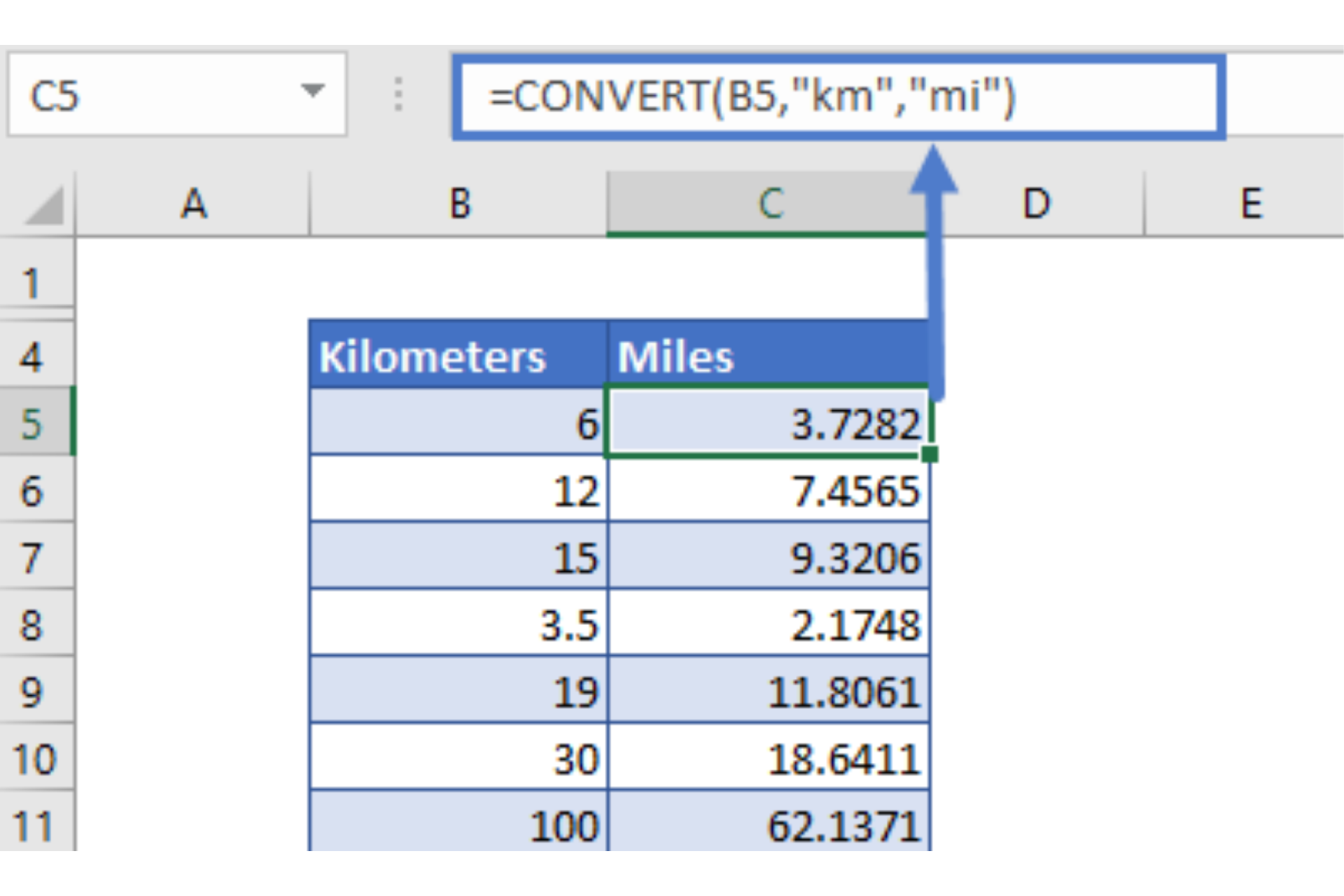How to Convert Kilometers to Miles: Best Ways to Change
 |
| Illustrated picture. Photo: Mixi's |
| Table of Content |
A mile is an imperial unit of measurement commonly used in the United States to determine the distance between two locations. A kilometer is used to measure the same thing but is a metric unit of length. It’s a fairly easy mathematical equation to convert kilometers to miles, or vice versa.
What is a mile?
Mile is one of the historical units of measurement of length and is equal to 1709.344 meters. This unit is the standard measurement of a mile.
Also, 1 mile= 5280 feet=1760 yards (Yard is a unit of linear measurement.
1 Yard=3 feet.)
The symbol of the mile is mi or m.
Origin
The concept of ‘mile’ has been originated from the ‘Roman mile. At that time, one roman mile used to be equal to one thousand paces, where one pace was equal to 5 feet. And thus 5000 Roman feet used to denote one Imperial Roman mile.
After the decades of usage, finally, the international agreement standardized one mile as precisely equal to 1709.344 meters.
Apart from the fundamental unit ‘Mile,’ there are other types of miles too which were mainly popular in the ancient times. These historical miles are
* Italian Mile- one Italian mile is equal to one Roman mile or mile.
* Arabic Mile-One Arabic mile lies between 1.8 km and 2.0 km.
* English mile- One English mile is equal to 1.9 km.
* Welsh mile-One welsh mile is equal to 3 miles or 6.17km.
* Scots mile-One scots mile is equal to 1.81 km.
* Irish mile -1 Irish mile=2.048 kilometers.
* Dutch mile- 1 Dutch mile= 5 km (approximately).
This unit is used worldwide. But it is more popular in Liberia, Myanmar, United Kingdom and the United States.
Usages:
* A mile is a top-rated unit for the distance measurement.
* Sailors and air navigators use nautical miles which is equal to 1.151 miles.
* It helps in calculating the various geographic miles which are based on the latitudes and longitudes of the earth.
What is a km?
A kilometer is the unit of length in the metric system. This unit is used all over the world for measuring geographic distances, lengths etc.
1 kilometer = 1,000 meters=about 0.62 miles.
The International Bureau of weights and measure use this unit as standard to measure the length of an object.
The symbol of Kilometer is km.
Origin
On 8th May 1790, the French Academy of Sciences developed a new measurement system which was named as ‘Millaire’ in August 1793. The name ‘Kilometer’ has been descended from this name ‘Millaire’.
Usages:
* It is used to measure the distance between two places, Highways etc.
* It is a widespread unit to measure any lengths on the medium range.
How to Convert Km to Miles: The Km to Miles Formula
Any time you're asked to convert from one unit of length to another, all you have to do is multiply the first unit by the appropriate conversion factor. So, if you're being asked to convert km to miles, you'd do this multiplication:
kilometers×conversion factor=miles
The conversion factor for converting kilometers to miles is 0.62137119, but for most purposes, being accurate to four decimal places is enough – so usually you'll use 0.6214 as your conversion factor. If you're not sure how many decimal places you must be accurate to, ask your teacher.
Let us assume, a known distance is equal to 19 kilometers, and you want to know the corresponding mile (or miles) figure. So using the conversion formula of kilometers to miles, you get
19 kilometers= (19×0.621) miles=11.799 miles=11.80 miles (approximately).
Isn’t that simple.
Using Online Tools to Convert Kilometers to Miles
Use a conversion chart or online calculator. The charts list the number of kilometers alongside the equivalent miles. The calculators allow you to plug in the number of kilometers to get the number of miles.
For example, a chart would show that 11 kilometers is equal to 6.84 miles. However, 11 miles is equal to 17.7 kilometers.
If you know how to use Microsoft Excel, you could also use an Excel formula to do the conversion. To convert kilometers to miles in Excel, the formula is CONVERT(x,"y","z"). In the formula, "y" is the original unit of measurement, "x" is the quantity of that unit, and "z" is the unit of measurement you want to convert to.
Convert Kilometers to Miles in Excel & Google Sheets
 |
| Photo: Mixi-2 |
Using the CONVERT Function
The CONVERT function can be used to convert values given in kilometers to miles. We just need to enter both the value and measurement types into the function. We can use the abbreviations of the measurements.
Let’s test the formula on an example for better understanding. Say in column B, we have values in kilometers that need to be converted to miles. So, just type the following formula in cell C4 and drag it down to apply it to the whole table:
=CONVERT(B5,"km","mi")
Here, the k in the above formula is a prefix that means 1,000, so km is 1,000 meters rather than 1km.
By changing the values in Column B, the Column C values will update automatically.
Using Estimation to Convert Kilometers to Miles
 |
| Photo: Inch Calculator |
Use an old trick to do the calculation. It’s too hard for most people to multiply any number by 0.62137119. There is a way you can do the calculation in your head.
- Let’s say the number of kilometers is 144. Halve it. That gets you 72. Then take a quarter of the half. That’s 18.
- Now, add the two together, the half and the quarter: 72 plus 18 in this case. You get 90. That’s the answer.
Use Fibonacci numbers to do the conversion. This one's unusual, but it works. These numbers are a series of numbers in which each subsequent number is the sum of the two before.
- Start with two consecutive Fibonacci numbers. For example, the numbers 5 and 8. There are 8 kilometers in 5 miles. To convert back, read the result in the other direction, as there are 5 miles in 8 km.
- This works as an estimate only. For example, take the consecutive Fibonacci numbers 21 and 34. This would tell you there are 34 kilometers in 21 miles and vice versa, when the exact answer is 33.79 kilometers.
- In order to convert a number that isn't a Fibonacci number, express the original number as a sum of Fibonacci numbers and do the conversion for each Fibonacci number separately. Say you want to convert 100 miles to kilometers. Number 100 could be a sum of Fibonacci numbers 89 + 8 + 3. The Fibonacci number following 89 is 144, the Fibonacci number following 8 is 13 and Fibonacci number following 3 is 5. So add 144 + 13 + 5 = 162 kilometers in 100 miles.
Find other conversions for kilometers. Perhaps you don't want to stop with miles. There are many other conversions for kilometers.
- Every kilometer is equal to 39,370.07874 inches, 3,280.839895 feet,1,093.613298 yards, and 100,000 centimeters.
- Every kilometer is equal to 1,000 meters.
An Example of Converting Kilometers to Miles
Imagine that you're being asked to convert 5 kilometers into miles. You already know how many kilometers you're being asked to convert, and you know the conversion factor; so all you have to do is fill them into the conversion formula:
5 kilometers×0.6214=? miles
Once you do the multiplication, you'll have your answer:
5 kilometers×0.6214=3.107 miles
If you've ever run or walked in a mid-distance race, this is probably a familiar number; 5k or 3.1 miles is a very popular race distance.
Kilometers to Miles Conversion in Python
 |
| Photo: Youtube |
This program prompts the user to enter the value in Kilometers and converts it into Miles by multiplying the entered value with 0.621371 (1 Km = 0.621371 mi.).
# Program to convert Kilometers to Miles km = int(input("Enter the value in kilometers: ")) # 1 Kilometre = 0.621371 Mile ratio = 0.621371 # Converting km to mi. mi = km * ratio print("The entered value in Miles: ", mi) Output:
Enter the value in kilometers: 10 The entered value in Miles: 6.21371
A Quick Lookup: Conversion table of miles to km
| Mile(or Miles) | Kilometer(or Kilometers) |
| 1 | 1.6093 |
| 2 | 3.2187 |
| 3 | 4.8280 |
| 4 | 6.4374 |
| 5 | 8.0467 |
| 6 | 9.6561 |
| 7 | 11.2654 |
| 8 | 12.8748 |
| 9 | 14.4841 |
| 10 | 16.0934 |
| 50 | 80.4672 |
| 100 | 160.9344 |
 How to Convert Degrees to Radians and Radians to Degrees: Best Ways to Change How to Convert Degrees to Radians and Radians to Degrees: Best Ways to Change Welcome to math lessons of KnowInsiders. The first lesson in the series will be how to convert degrees to radians with simple guides. |
 How to Convert PDF To Excel: Best Ways to Change How to Convert PDF To Excel: Best Ways to Change Your coworker sent you a PDF file instead of the Excel document you wanted, that doesn’t mean you’re actually stuck with it. In this guide, ... |
 How to Convert Word to PowerPoint How to Convert Word to PowerPoint PowerPoint is a great way to merge text and images for presentations. Are you struggling with the way to convert Word to Powerpoint? Check out ... |


























